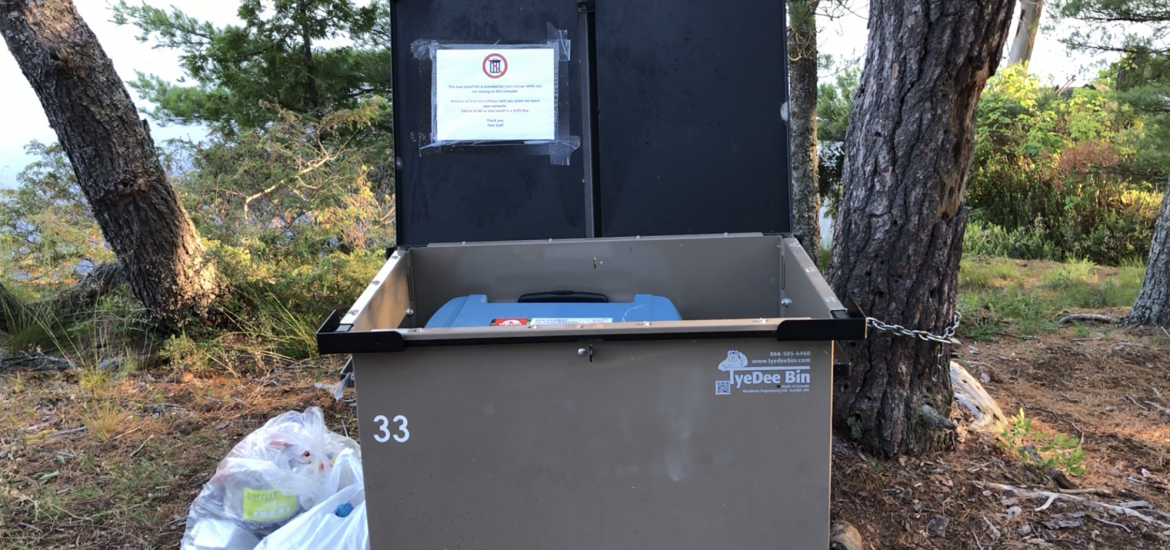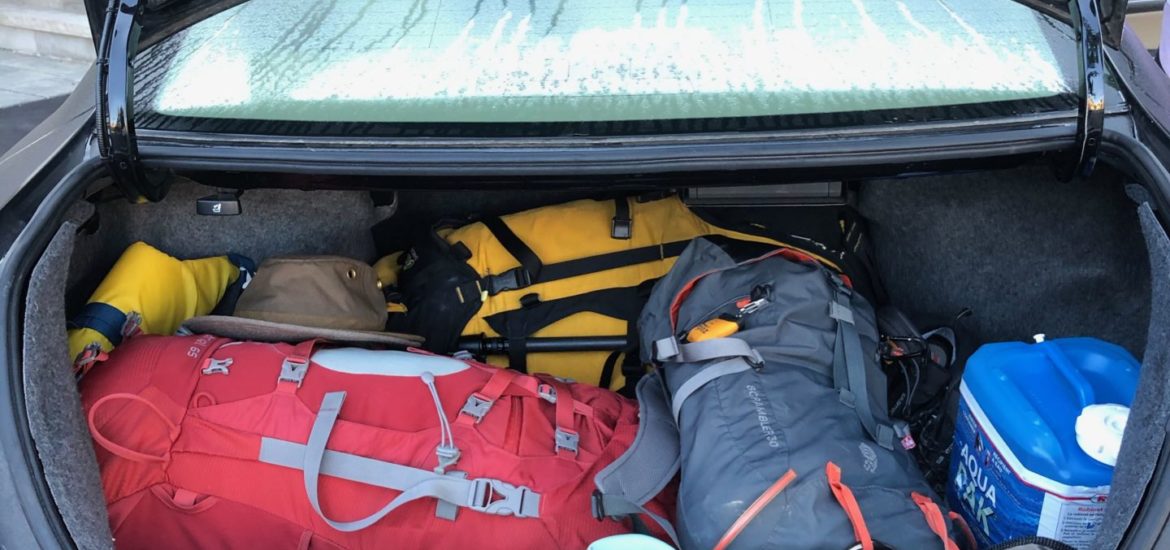When I first started camping, I made the mistake of leaving my food cooler outside overnight. Little did I know that it turned into a late-night buffet for resident animals.
When I woke up, there was food wrapping and cooler contents strewn all over my campsite. I quickly learned a valuable lesson: never leave an unsecured cooler outside.
So, to help make sure you don’t make the same mistake I did, here are 4 proven methods to make sure animals don’t get into your cooler while camping.

1. Lock, Tie or Strap Cooler Door Closed
Animals are a lot smarter than we think. They are cunning and great problem solvers. So, when a mysterious box wreaking of mouth-watering scents is left unattended in their backyard they can’t help but try to get inside.
And if the raptors from Jurrasic Park has taught us anything, it’s that food-motivated animals can figure out how to open doors given the opportunity!
All jokes aside, most standard camping cooler doors aren’t designed with latches or locks. This makes them easy targets for curious critters such as raccoons who are master food burglars.
A quick and easy fix is to use spare rope or paracord and tie the door shut when left unattended. If the cooler has a latch, use a dual-locking carabineer to keep it shut. You can also use a ratchet strap to ensure a tight seal.
But be warned. Powerful and sharp teeth and claws can rip through tough plastic coolers, so try not to leave a cooler outside overnight. Instead, keep it in a safer spot, like the ones suggested below.
Pro-tip: Placing a large weight on-top of a cooler door might seem like a smart idea. But, animals can easily push the cooler over and get inside.

2. Use a Food Locker
To keep food secure, some campgrounds and campsites include a food locker. A food locker is essentially a metal cabinet. Some food lockers are small, only allowing enough space for a bear bag or food canister. Other food lockers are large, allowing for large coolers to be placed inside along with other scented items.
Food lockers are designed to withstand even the most ambitious and tenacious animals from getting to your food. The all-metal construction and difficult to open door handle ensures your food is kept safe.
However, food lockers are not impervious to insects. Ants and other tiny creatures can still get inside and potential spoil your food, so make sure the cooler is sealed tight!

3. Place Cooler in a Vehicle
If you’re car camping and are looking for a safe and secure location to keep food, you basically already have a food locker on wheels.
A car is a fantastic place to keep a cooler. A car trunk is next to impossible for most animals to break into. The trunk and doors are also typically well sealed to keep out insects.
During the day time a car tends to trap heat, so it isn’t the best place to keep a cooler, especially if you want to keep the contents cool. However, at night, placing a cooler in the trunk or in the main part of the vehicle with the windows shut is a great option.
Just make sure to lock your doors, because… raptors. (Also, bears and racoons have been known to open car doors in popular camping spots.)
4. Hang Cooler from Tree
If you’re camping in the backcountry and there are no secure places to keep your cooler overnight, the best (and only) option is to hang your cooler.
Hanging a cooler keeps it out of the reach of most animals. Yes, chipmunks and squirrels can get to it, but they don’t have enough strength to chew threw the cooler.
If you’ve never hung a cooler, or think it’s going to be hard, I’ve outlined a step-by-step process for how to hang a cooler in a tree.
You’ll see the proper technique and supplies required. If I can do it, you can too! Practice it at home before you leave so that your backcountry camping trip goes extra smooth.
This article contains affiliate links, which help support this blog at no cost to you!
